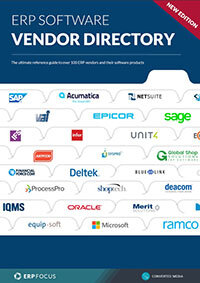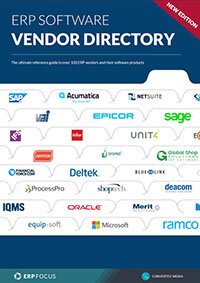The Future of ERP: A 2013 Customer’s Perspective
In my Forbes column from earlier this year ERP Prediction for 2013: The Customer Takes Control, insights gained from visiting a series of forward-thinking manufacturers and speaking with their project leaders and CIOs formed the basis of the predictions shared. Since then, I’ve had the opportunity to speak with over two dozen CIOs and project leaders in aerospace and defense, automotive, high tech manufacturing and channel assembly, and process manufacturing industries about the future of ERP.
The following are the key take-aways and insights gained from of my conversations with them and their perspectives on the future of ERP in their industries:
The highest-performing CIOs (as measured by completed internal projects with high adoption) realize that cost cutting and operational efficiency skillsets are what it takes to get a CIO role, yet excelling in that position requires being a business strategist as well. This is a difficult transition for many CIOs to make as they have a mindset purely of risk mitigation. The CIOs who are business strategists balance risk mitigation and the ability to selectively use enterprise IT as a catalyst for profitable, intelligent revenue growth.
Customers’ expectations regarding usability, ease of navigation and the entire user experience are accelerating faster than many IT departments can keep up with. Facebook,, Twitter, LinkedIn and the myriad of other social networks are setting the bar of expectations much higher than they have been before. Several of the CIOs see the value of social networking technology as a platform for collaboration, yet there is still resistance to the concept with others. Of the CIOs who see its value, they are either piloting social-based collaboration platforms or have introduced them company-wide. This is driving the future of ERP to more customer-centric systems faster than many CIOs expected.
Manufacturers are turning to cloud-based ERP systems to fill the gaps legacy, homegrown and dated large-scale ERP systems can’t meet. This is especially the case in automotive and high tech manufacturing where legacy, homegrown and large-scale ERP systems lack the designed-in support for entirely new approaches to supply chain management, demand management, pricing and fulfillment. One CIO was able to get acquired manufacturing plants across Asia online 60% faster with a cloud-based ERP system versus custom integration to a legacy, large-scale ERP platform.
More focus on the real business value of an ERP system beyond being a system of record. CIOs and project leaders both mentioned that the increasingly high maintenance costs, continual stream of complex updates to install, and challenges of keeping employees trained are making their organizations more closely evaluate the business value ERP systems deliver.
Support for mobile devices is now a requirement in nearly all internal IT projects. From senior executives who want to immediately have access to intuitive, easily customized reports on their iPads to project managers who need project data in the middle of meetings, the future of ERP will undoubtedly see accelerated mobility support. Marketing, sales, sales operations, pricing and services all have mobility support as a high priority in their internal IT projects and many are looking to create their own iOS and Android-based applications that can be quickly distributed through selling and service channels globally.
Strengthening analytics and Business Intelligence (BI) platforms so they can provide a more precisely aligned set of key performance indicators (KPIs) and metrics of performance to specific strategic needs is also accelerating. Too often the homegrown, legacy and large-scale ERP systems purchased in the past were installed and customized for a given business strategy that has changed significantly over time. CIOs tell me that their internal customers, many of them senior management, want to see how manufacturing efficiency and cost controls are directly impacting the financial performance of their companies. Only with advanced analytics and BI platform is possible. For high tech manufacturers were gross margins are often very thin, this is becoming more important as these companies increase new product introductions per year to stabilize and grow revenue.
Free white paper

ERP Software Vendor Directory
Put the most comprehensive ERP vendor directory on your desk today

Related articles
-

Intelligent ERP systems: What AI can (and can’t) do
What AI in ERP really means for buyers in 2025
-

Secret KPI: Why Your ERP Implementation Team Matters More Than Software
Learn how Godlan ensures successful ERP implementation for manufacturers with proven strategies &...
-

ERP and cryptocurrencies - where do we stand?
How can we expect cryptocurrencies to impact ERP in the future?

